The concept of pizza delivery hasn’t changed much in pretty much forever. You place an order for a pie, a team makes it, and someone hops into a car, onto a scooter, or onto a bicycle, and runs it out to you. Often, the pizza delivery mobile is whatever vehicle the pizza shop has available to it. But one pizza retailer, Domino’s, has repeatedly tried to reinvent pizza delivery, and has an incredible stack of failures to show for it. One of these failures was supposed to be the future of pizza. This is the 1984 Tritan A2, a rare trike that promised a slippery 0.15 coefficient of drag and a thrifty 80 mpg from a rotary engine. One of these extremely rare experimental pizza cars has shown up for sale.
Domino’s Pizza has long seemed determined to shake up the pizza delivery market, which I wasn’t even aware was ripe for disruption. The company, which was founded in 1960 in Ypsilanti, Michigan, after Thomas Monaghan and his brother James purchased the Dominick’s pizza shop. Takeout pizza had experienced a boom after World War II, as soldiers expressed interest in buying cooked pizzas and taking them home with them. Inventors sought out ways to improve the packaging and delivery methods for takeout pizza. The innovation that Domino’s originally brought to market, the Atlantic reports, was the stackable flat-pack corrugated pizza box in the 1960s. Allegedly, Domino’s didn’t patent the design, allowing all pizza shops access to the invention.
As Hungry Howie’s Pizza & Subs, Inc. says, pizza delivery also took off in the 1960s alongside the sharp rise in car ownership. This also coincided with the rise in car-based dining and fast food. Delivery changed the restaurant industry, and things got so competitive that pizza shops offered a “30 minutes or less” guarantee, where if the driver failed to arrive on time, the pizza was free.

30 Minutes Or Less
Back in 1960, Domino’s had only a Volkswagen Beetle for deliveries, but as the business grew, so did the promises. As the Hustle writes, Domino’s was one of the major advertisers for the 30-minute delivery guarantee, and the chain was reportedly so serious about this guarantee that drivers allegedly sometimes rushed so hard that they crashed their cars, causing injuries and sometimes deaths. The shocking thing is that, as the Hustle reports, some stores allegedly then passed the pizza on to another driver in an attempt to beat the timer, anyway.
Domino’s said that the real speed was its 7-minute cooking time, not how fast their drivers commanded their vehicles. Concerns for safety and lawsuits would reportedly bring the end of the 30-minute guarantee. Still, Domino’s was always looking for ways to get an upper hand against rivals like Pizza Hut. One method employed by Domino’s involved installing gas ovens in cars so that the pizza remained piping hot on delivery.

In 2015, Domino’s implemented a modern take on this idea with the Local Motors-developed and Roush-built DXP (Delivery Expert) car. These were little more than Chevrolet Sparks with pizza ovens on them and drink carriers where the front passenger seat should be, and perhaps are most famous today for being rescued by car YouTubers.
In more recent times, Domino’s teamed up with Nuro to make autonomous pizza delivery robots. The chain is also rolling out a fleet of Chevy Bolt EV delivery cars, though without the gimmicks of the DXP cars. All of this is pretty wild. Keep in mind that most pizza shops will send your pizza out in a regular car and inside of a warm sleeve, that’s it.
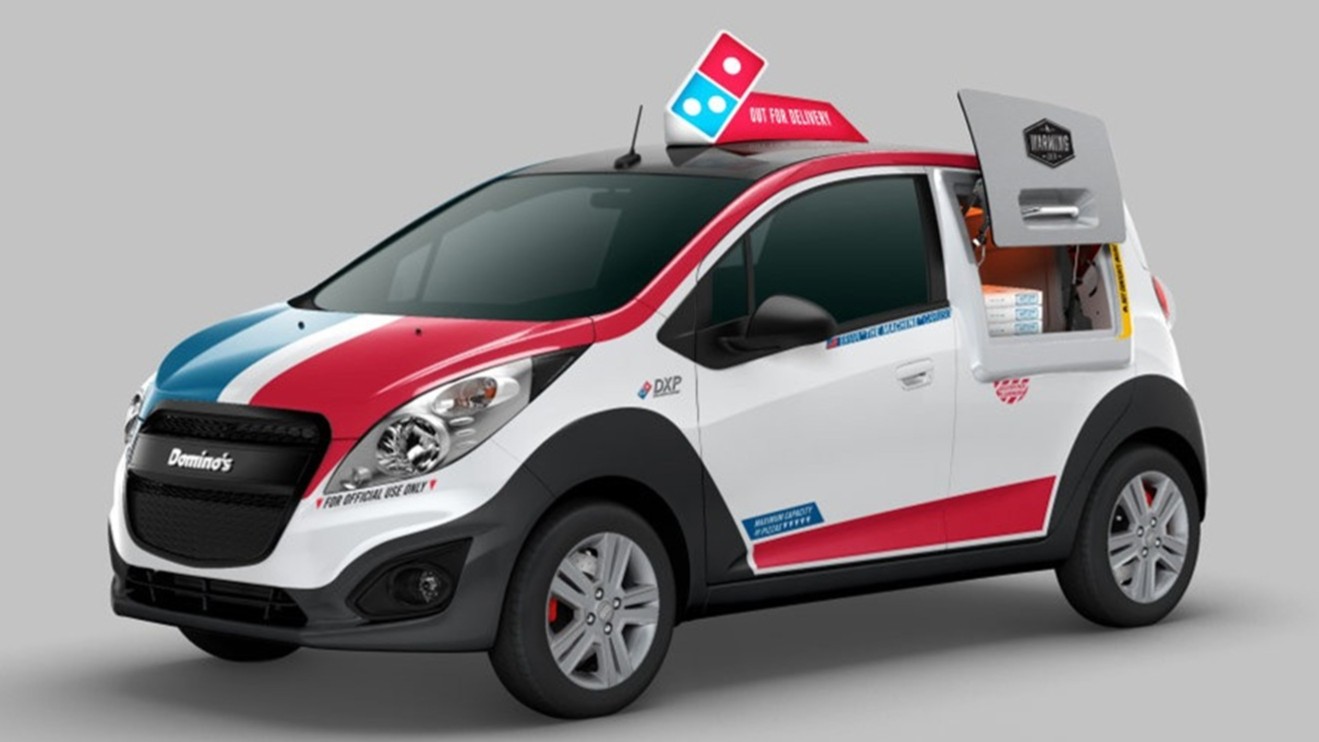
But Domino’s? It’s obsessed with finding the weirdest ways to deliver its cheap pizzas. The craziest idea Domino’s had was probably this, the Tritan A2-based rotary-powered pizza delivery trike.
The Tritan A2
I last wrote about the Tritan A2 back in 2023 when another former Domino’s delivery car appeared for sale. Amazingly, this trike is not that car, but one of the other 10 Tritan A2s that were built. Yes, that means that I’ve now written about 20 percent of the entire production run of this obscure trike.
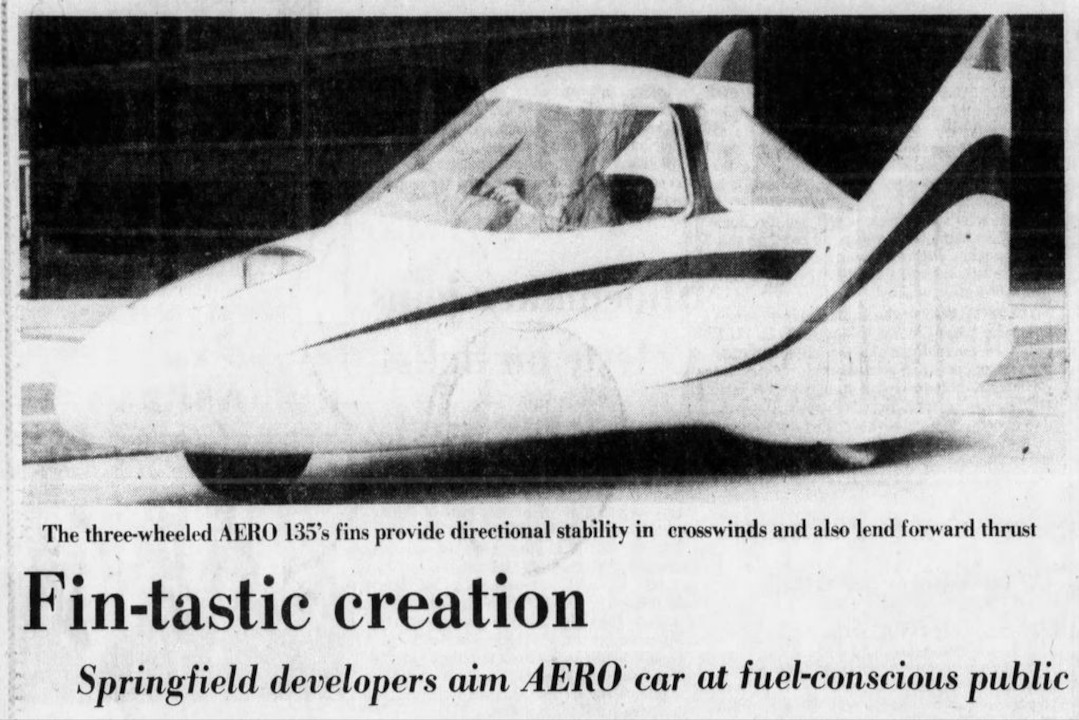
The Tritan A2 is a product of Tritan Ventures, and here’s what I wrote about the company in 2023:
There is limited information that can be easily found out there about Tritan Ventures. If you search the business, your first result is a cosmetics and refrigeration company based in the Philippines. Dig a little deeper and you’ll find a Tritan Ventures, Inc. incorporated in Ann Arbor, Michigan in 1984 by Douglas J. Amick. According to an owner of a Tritan A2, Amick was an aeronautical engineer and had been experimenting with trikes for years. In 1969, Amick asked his father, James L. Amick, for an ice boat. Amick’s father came up with a trike with a rigid airfoil sail on it, making a wind-propelled vehicle. This vehicle had runners at first, which were eventually swapped out for wheels. Allegedly, the “Windmobile” could travel up to five times the speed of a crosswind.
A later project was the Tritan Aero 135, an 800-pound aerodynamic trike powered by a 390cc 14 HP Tecumseh riding lawnmower engine. Apparently, this one-off vehicle sported a coefficient of drag of just 0.135 and scored 75 mpg. The Tritan Aero 135 was tested by Car and Driver and published in a November 1982 issue of the magazine. Allegedly, Car and Driver billed it as “An Answer to a Question That Nobody’s Asking,” though I could not find a version of the issue uploaded online.
According to the Dayton Daily News, Douglas Amick was once stopped by police in the Tritan Aero 135 after the sheriff received reports of a plane landing on an expressway. At the time, Amick targeted a price of $6,400, or $20,640 today. Two years later, the younger Amick was still at it, dreaming up a super aerodynamic and efficient vehicle.

The primary goal of the Tritan A2 was to make a car so lightweight and so aerodynamic that it could be propelled with the smallest possible engine, and thus get stellar fuel economy, perfect for a vehicle built in the fuel-conscious 1980s.
The heart of the Tritan A2’s lightweight design is its fiberglass monocoque shell. At the rear is the so-called Amick Arch, a sort of wing which was said to increase stability and help move the Tritan A2 along by acting like a sail in a crosswind. The body–which you’ll note doesn’t have any doors–slices through the air with its 0.15 coefficient of drag. Entry and exit were achieved through opening and closing the vehicle’s canopy, somewhat similar to how you’d get into the cockpit of some planes.

The three-wheel delta trike configuration helps keep the vehicle’s size down, and reportedly, Tritan Vehicles hit an impressive curb weight of only 899 pounds. There are motorcycles that weigh more than that!
A vehicle as slippery as the A2 would be impressive today, but it was almost unheard of in a production vehicle back then. A Toyota MR2 of the 1980s had a Cd of 0.35 while a C4 Corvette nudged out a Cd of 0.33. Even a new Lucid Air has a slippery Cd of 0.197, which is still not as slick as a Tritan A2.
Power came from a Savkel SP-440 single-rotor 440cc Wankel engine produced by Savkel Ltd (also known as Syvaro). This engine produced 30 HP, and it reportedly returned up to 80 mpg in a Tritan A2. The Tritan A2 can hit 62 mph in about 17 seconds and reach a top speed of around 95 mph. The Savkel delivers power via a belt-driven CVT. Don’t worry, there are sound clips of this engine running! Check out the video above.
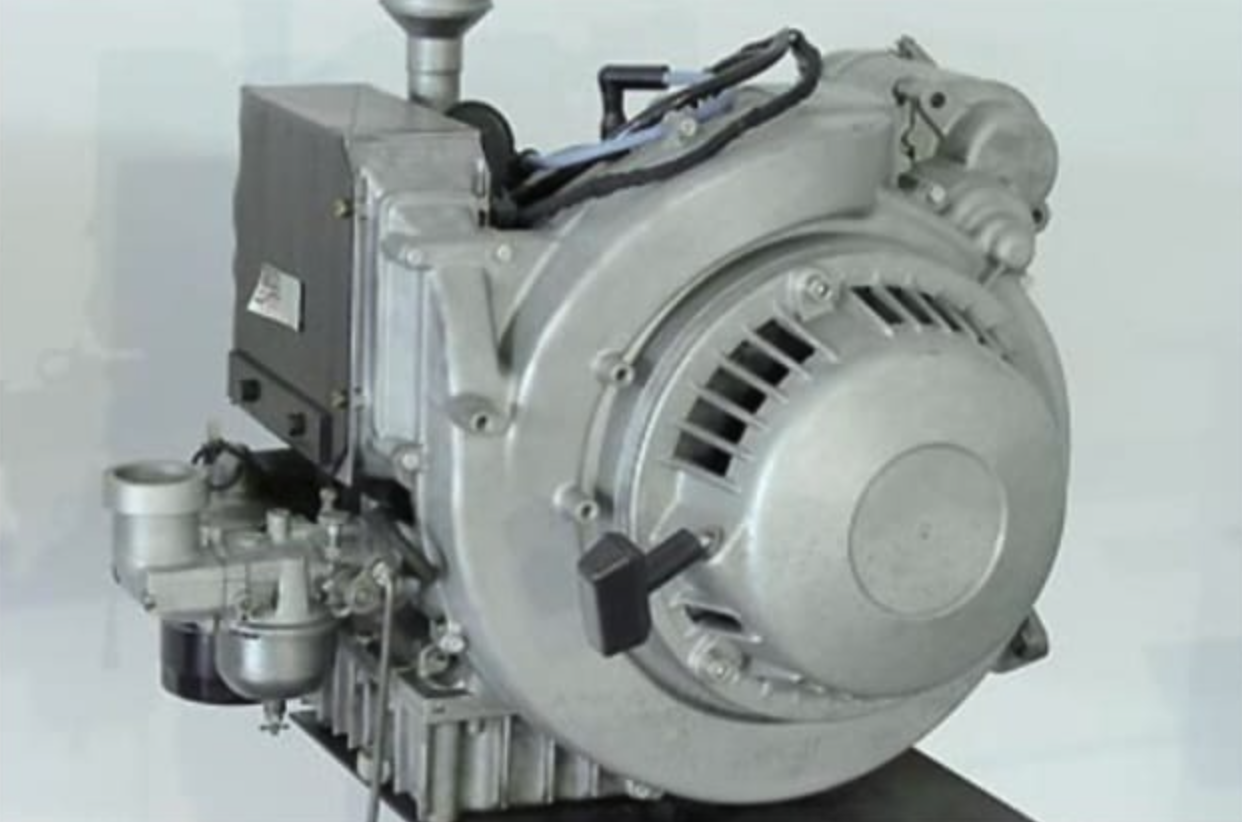
The Tritan A2 design was alluring to Domino’s, which reportedly ordered ten of them for testing at select locations. The pizza giant had planned on rolling these out nationwide. Some sources note that all ten examples had their rear seats replaced with pizza warmers, and that those pizza warmers were removed at the end of Domino’s testing.

If you look no further than the 80 mpg figure and the spaceship looks, the Tritan A2 probably sounds like the perfect pizza delivery car. I mean, your pizza shop is going to be the talk of the town when your drivers show up at customers’ houses in this thing. Having such a frugal machine is also great for the bottom line, too.
But if you start thinking about it more, then you realize that it’s sort of a terrible idea. These trikes were meant to eventually run at Domino’s shops nationwide, which presumably means running in ice, snow, or blazing heat – and there was no air-conditioner. Further, the delivery driver had to slump down into the cockpit and lift themselves out of it with every delivery. After a shift making deliveries in the Tritan, your quads were probably hotter than the pizzas.
Oh yeah, and then there’s the whole Wankel rotary, which isn’t exactly famous for reliability, or actually hitting advertised fuel economy numbers. In other words, as much as I love the Tritan A2, I can see why only ten of them were built. Domino’s perhaps had the right idea, but the wrong wrapper for that idea. The pizza chain canned the idea in the mid-1980s, and by 1988, Tritan Ventures itself was gone.
This Tritan A2

That brings us to the 1984 Tritan A2, chassis 07, that is currently for sale on Bring a Trailer. That chassis number is important because while this looks similar to the Tritan A2 that I wrote about two years ago, that trike was unit 05. These things are so rare that they can easily be counted by single digits in their serial numbers.
The listing gives us details about the A2 that we didn’t know before, such as the fact that it has an 8-inch wheel in front and a pair of thirteens in the rear. This A2 features a hydrogas suspension with a leading link up front and a trailing arm in the rear. The only brakes are a pair of drums in the rear.

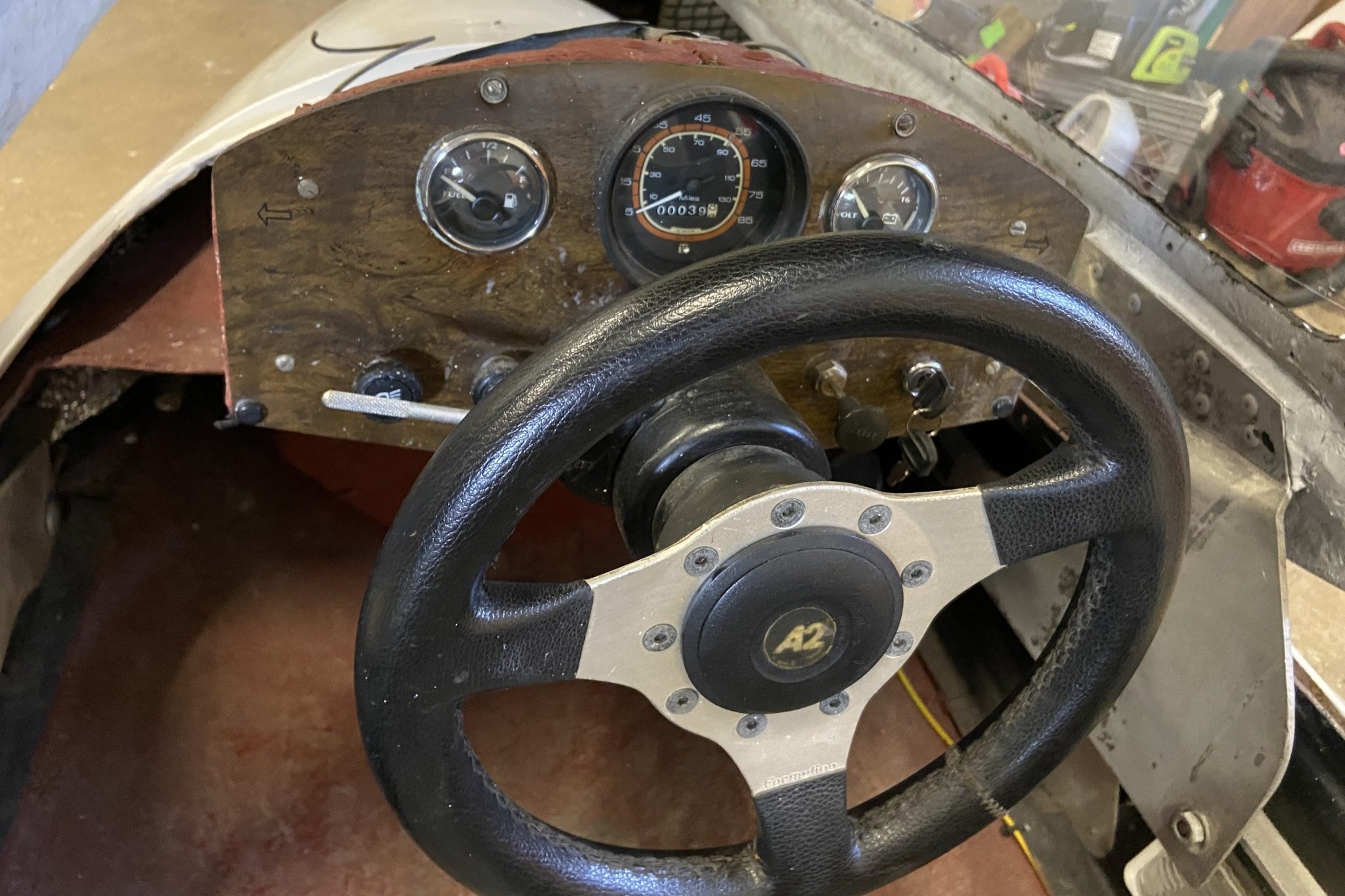
Inside, there’s an incredibly basic dash panel hewn from plywood and a single Renault-sourced seat. As noted earlier, the pizza warmer was removed from this car decades ago.
Something amusing about this particular Tritan A2 is that the rotary engine was removed and a 670cc Predator V-twin engine was installed in its place. That engine drives a snowmobile clutch, which turns a CVT. These engines make 22 HP stock, which isn’t far off from what the stock rotary made. Small engine tuners have easily doubled the output of these engines, so it’s technically possible to get more power out of this than what you got in the stock rotary.
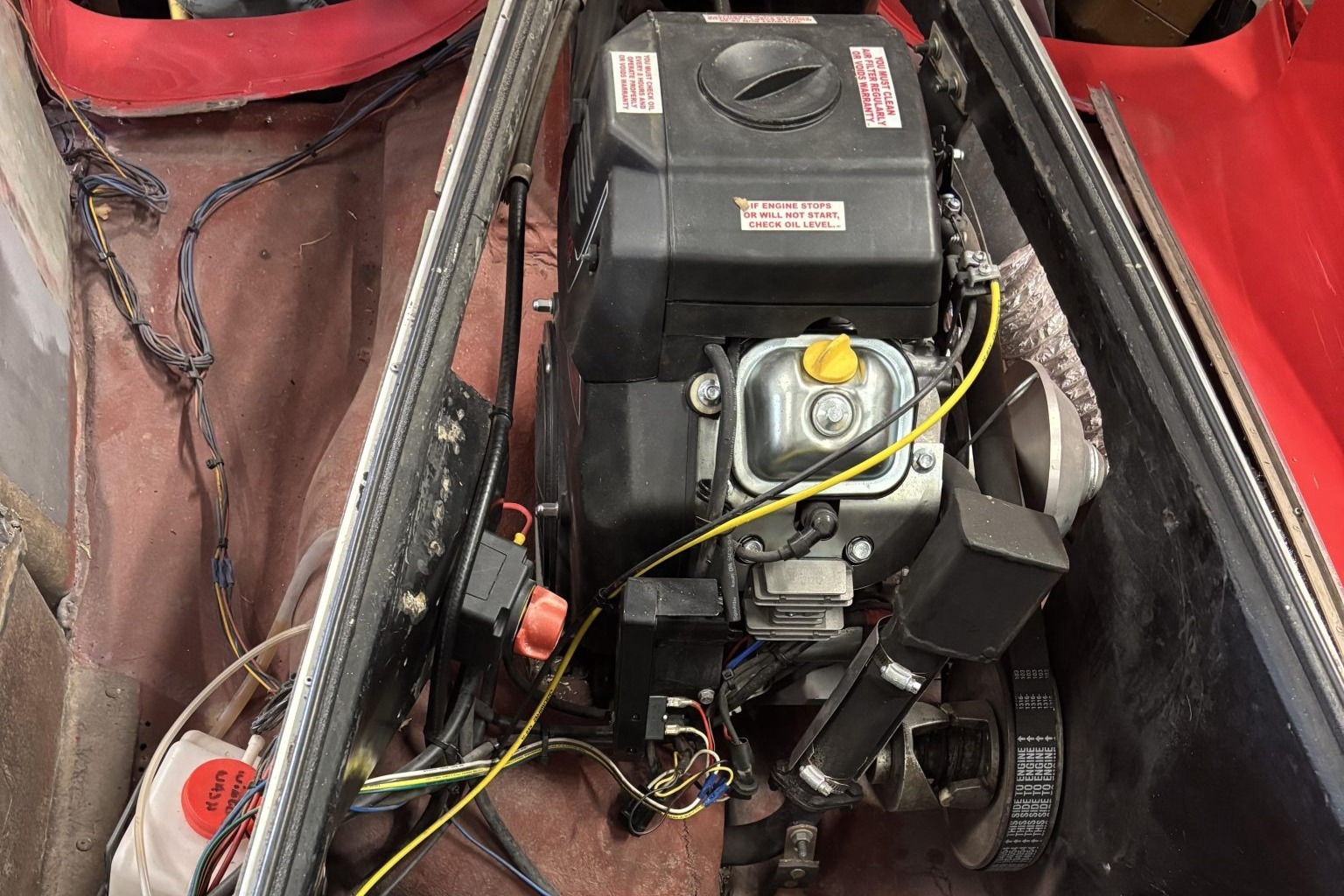
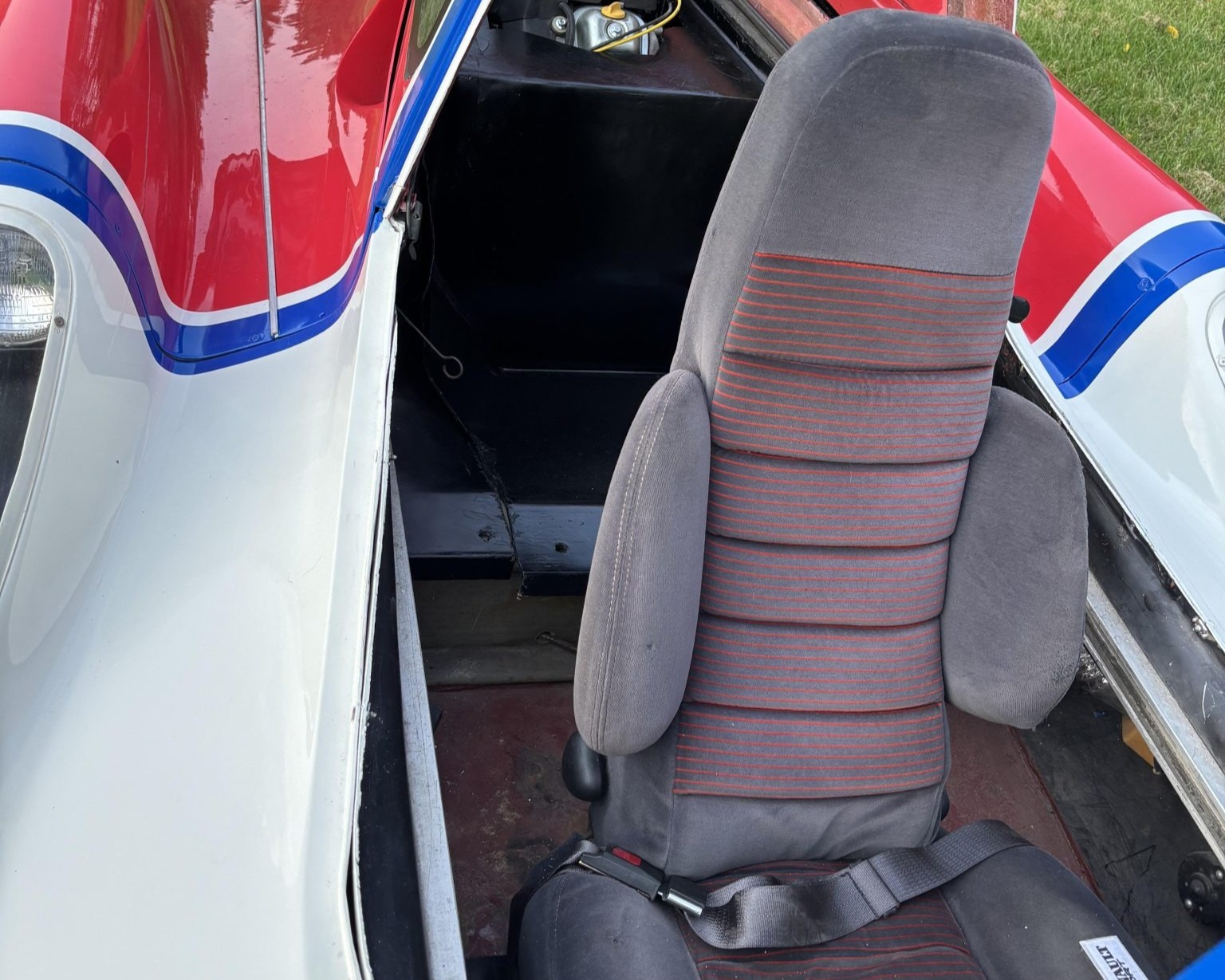
That said, the seller does say that the stock rotary does come with the vehicle. This rotary is described as running, but poorly. The seller decided to do the engine swap rather than try to troubleshoot the rotary. But, if you are a Tritan A2 purist, the seller says you’ll have the parts to bring it back to stock. Granted, Tritan has been dead for nearly 40 years, and Savkel was sold off to Freedom Motors a long time ago, so who knows what parts availability looks like.
Otherwise, the trike appears to be in okay shape, with a crack in the canopy and its taillight covers currently not installed. Should you buy this, you’ll get a Michigan motorcycle title that matches the vehicle, but has the brand misspelled as “Triton.” Yeah, DMVs do make mistakes like this. My 2009 Smart Fortwo is titled as a “Smart Lee,” whatever the heck that is.
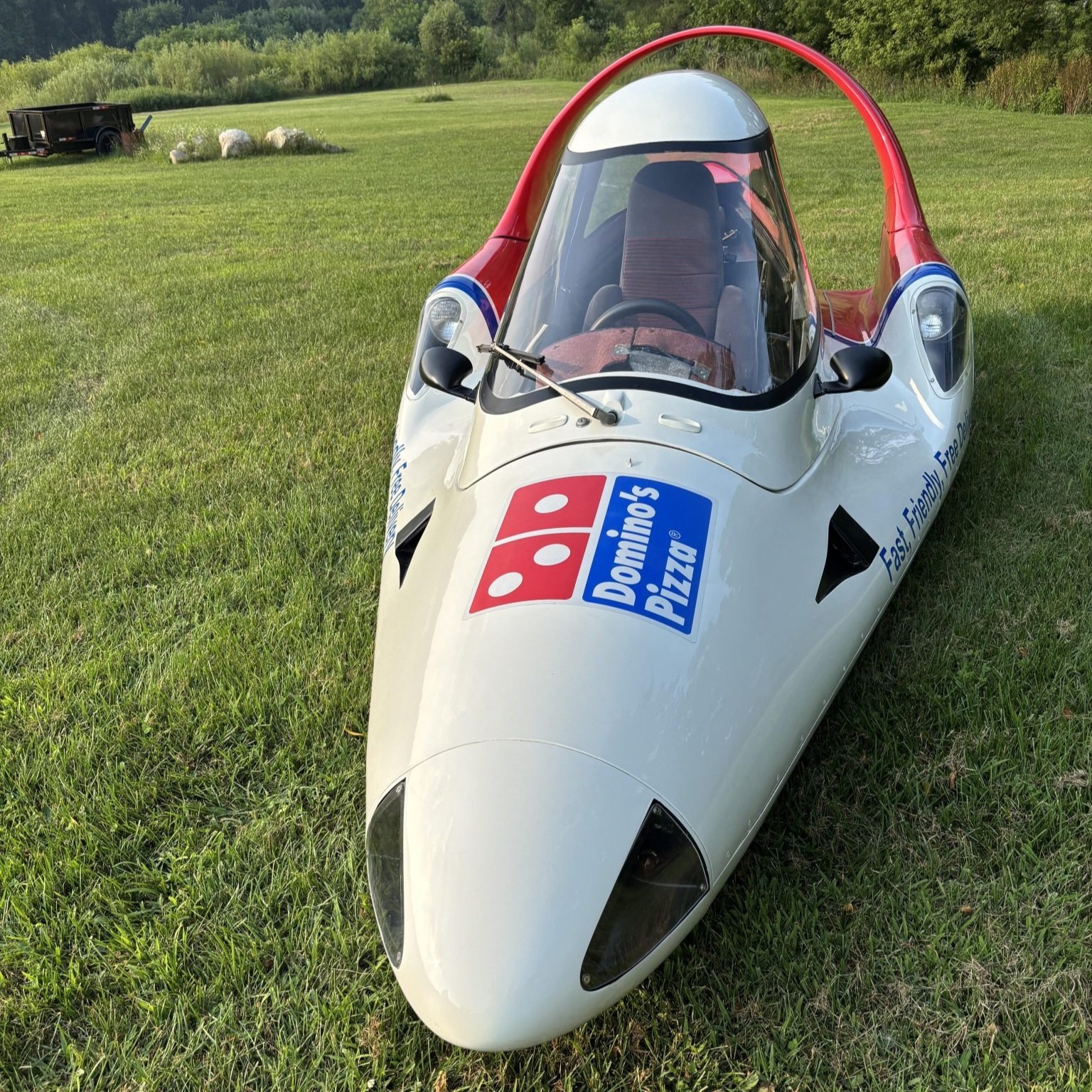
Sure, this Tritan A2 is imperfect, but chances are you aren’t going to see another for a while. If you want in, the Bring a Trailer auction is sitting at $4,600 with five days to go. To get an idea of what these are worth, the Tritan A2 I wrote about two years ago sold for $35,200 at Mecum.
The Tritan A2 is perhaps the weirdest part of the history of Domino’s Pizza’s relentless search for pizza delivery perfection. The company has seemingly tried everything to get a pizza to your door, even slinging those pizzas in a low-slung rotary spaceship. Today, the Tritan A2 is probably best as the weird car to take to car shows, and I’m all here for it.







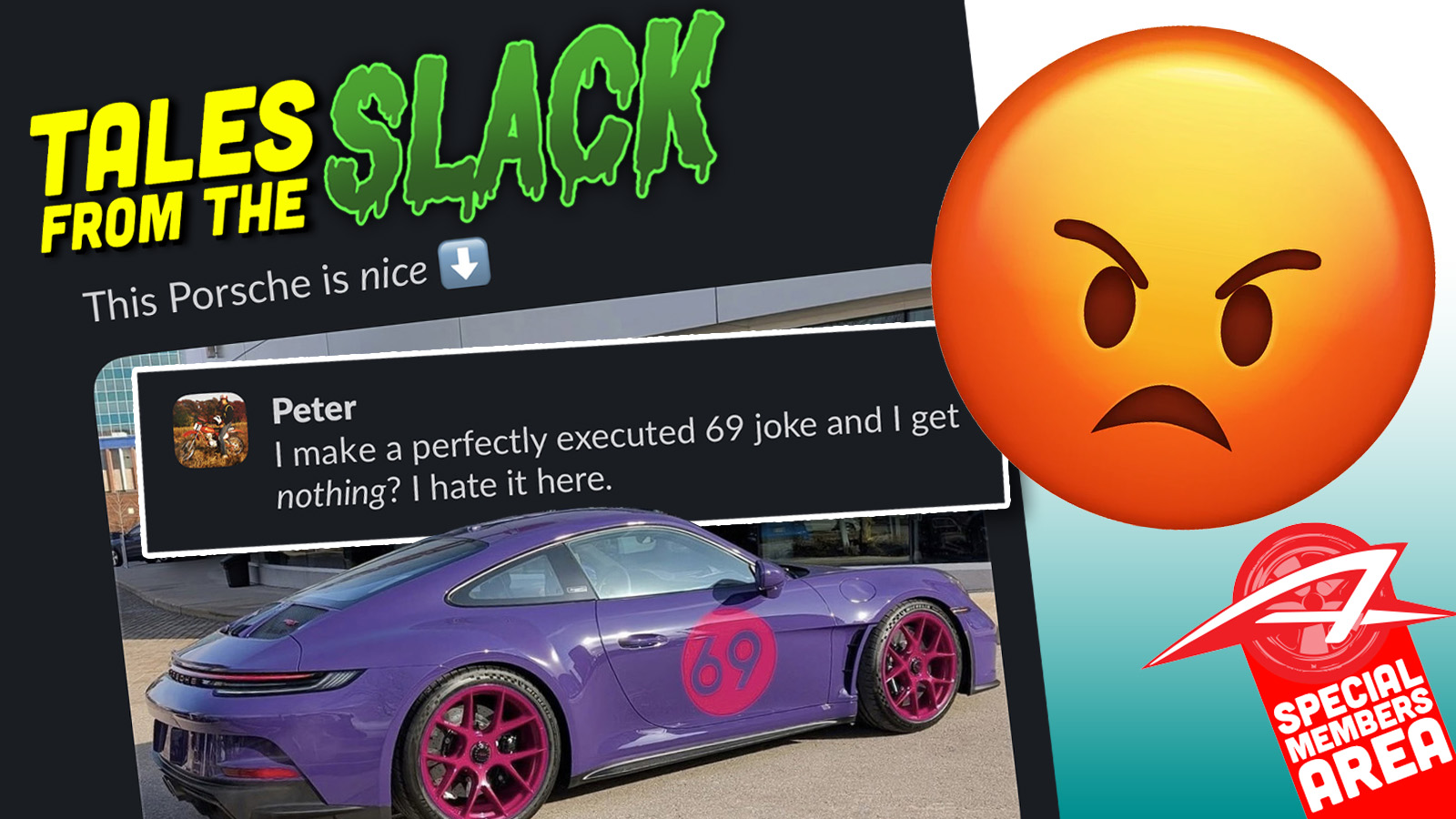
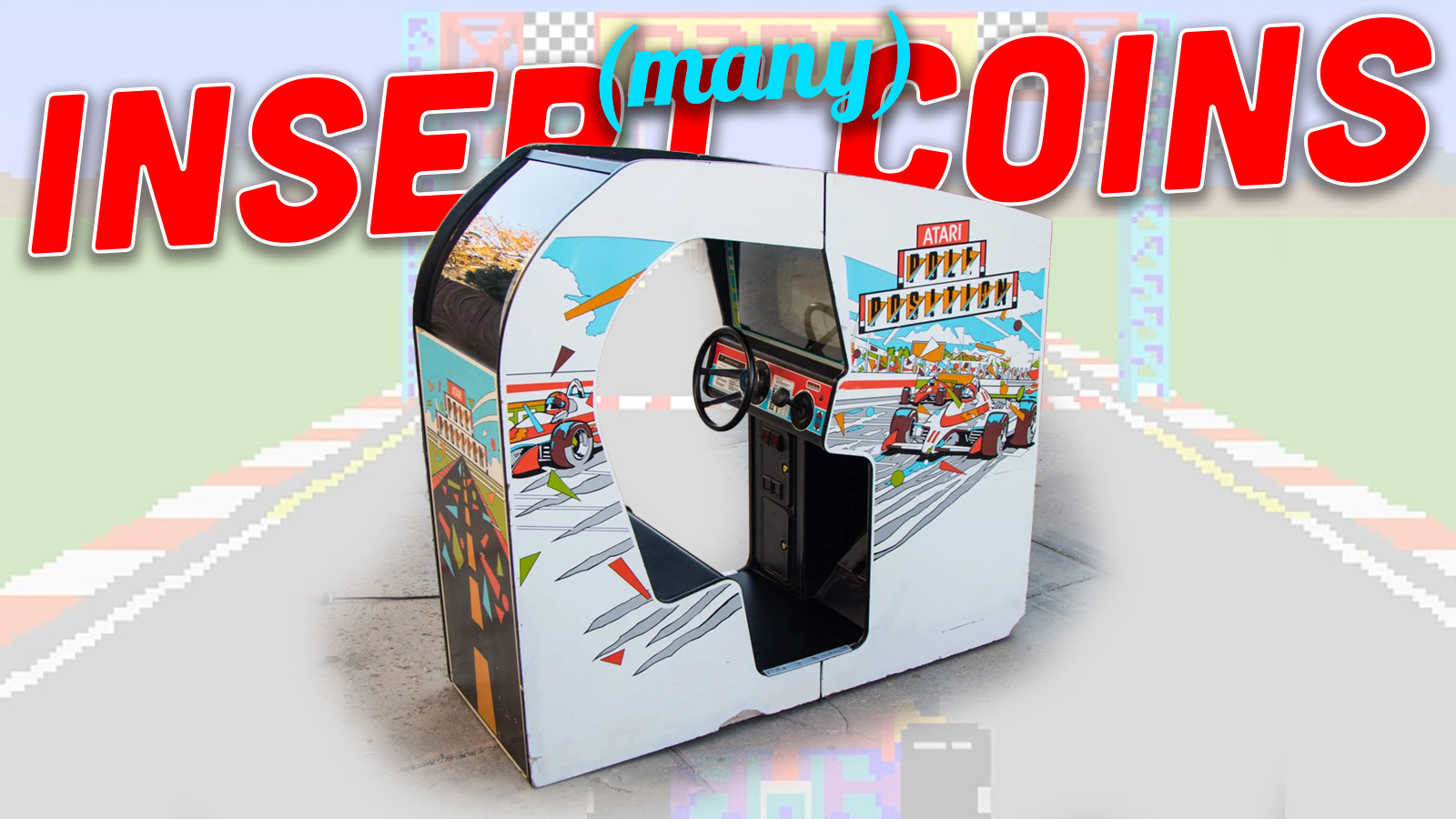
I find it incomprehensible that Dominos has done so many changes to improving their pizza delivery experience but failed on the most important part, making a decent pizza.
Through most of my childhood, my dad owned a pizzeria in small-town Ohio as a side venture. (Don’t ask.) He often encountered the problem of delivery drivers whose cars broke down and were therefore unable to do their jobs. So he’d go looking for cheap, reliable cars and sell them to the drivers on an installment plan, which benefitted him because now the drivers could get back to work.
But the drivers–who tended to be young men–would show off by zooming into the store’s parking lot and braking by slamming the transmission into reverse. Inevitably, they’d damage the transmission. Now they couldn’t work, and they had to make payments on the car, and it needed a major repair. My dad eventually stopped helping them out and told them to go find their own rides.
Anyway, the concept of specially designed pizza delivery vehicles makes some sense, especially if you have hundreds of outlets. You buy at fleet prices, lease them back to the franchisees for a little extra profit, and the cars effectively become rolling advertisements for your chain. You can choose a super-efficient base design that’s cheap to operate and easy to park. But if you think the drivers I mentioned above were rough on their cars, imagine what they’d do if the car belonged to corporate.
Yet another argument in favor of manual transmissions. Although if you were able to successfully get a manual transmission into reverse while moving forward, it would be interesting to say the least.
Oh, that wouldn’t stop ’em. They’d just see it as a challenge.
Hmm, I’m curious how that transmission is designed. Syncros on reverse I guess?
Maybe pizza delivery is an actual quality use for an EV.
Yeah, I worked at a place that had a fleet of Chevettes as delivery cars (in the mid-2000s). Apparently several new Chevettes were purchased new (20 years prior, obviously), and enough were written off within a month or two that from then on, they stockpiled used Chevettes and kept a mechanic on retainer.
When I delivered Pizzas in the mid 80’s, we had a Chevette as a delivery vehicle.
We replaced the tires every month and the brakes lasted 3 months. We downshift the Automatic for breaking.
The local cops nicknamed me Speedy.
The nice thing about extremely low production vehicles is that most of the “unobtainium” parts can be easily fabricated. Its exceptions are parts that were borrowed from something that was manufactured but you have no idea what it was. Soviet helicopters parts? NOS Tucker steering knuckles? A New Holland transmission?
Actually repurposed New Holland transmissions show up where you least expect them, nifty things.
I disagree unobtanium pretty much means unobtainable and refabricating isn’t cheap at low levels
An a-arm welded up from tubing is much easier than one made of die cast aluminum or a steel stamping.
Fiberglass is easier than steel stampings. Remember, parts made by hand with simple tools can be remade by hand with simple tools
How soon until Robert of Aging Wheels Youtube picks this up? He is always up for trikes.
The Dollop podcast has an excellent episode about Dominoes and how bonkers of a company it is.
I hereby give props to Mercedes for another fascinating article. You really do your research. Thank you for keeping us entertained. But sometimes it is best to check your brain at the door! Lol. Seriously..keep it up !